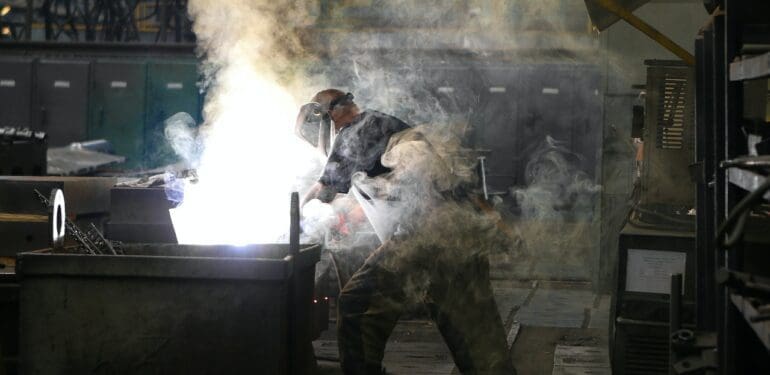Maintenance is a critical facet of the manufacturing business that often plays a behind-the-scenes role in ensuring the smooth operation of production processes. It encompasses a range of activities aimed at preserving the reliability, efficiency, and safety of equipment, machinery, and facilities within a manufacturing environment. Neglecting maintenance can lead to costly downtime, reduced product quality, and safety hazards. Therefore, here’s what you need to know about the significance of maintenance in the manufacturing sector, the various types of maintenance strategies employed, and the advantages of proactive maintenance practices.
Preventive Maintenance: Anticipating Issues
Preventive maintenance is a proactive approach wherein machinery and equipment are regularly inspected and serviced to prevent breakdowns or unexpected failures, which is particularly important if you’re thinking about buying used industrial equipment. This process involves scheduled maintenance activities, such as routine inspections, cleaning, lubrication, and component replacements, based on manufacturer recommendations and historical data. For instance, regularly servicing industrial electric pump motors is essential, as these motors are critical components in many manufacturing processes. Preventive maintenance helps extend the lifespan of equipment, maintain consistent product quality, and reduce the risk of production disruptions. By identifying and addressing potential issues before they escalate, manufacturers can save both time and money in the long run.
Predictive Maintenance: Data-Driven Insights

Predictive maintenance leverages technology and data analytics to forecast when equipment is likely to fail. Sensors and monitoring systems collect real-time data on the performance and condition of machinery, allowing maintenance teams to detect anomalies and predict maintenance needs accurately. By analyzing this data, manufacturers can schedule maintenance activities at the most opportune moments, minimizing downtime and optimizing the use of resources. Predictive maintenance not only reduces costs associated with unscheduled downtime but also enhances overall production efficiency.
Corrective Maintenance: Addressing Failures
Corrective maintenance, often referred to as “breakdown maintenance,” involves repairing or replacing equipment and machinery after they have failed. While this type of maintenance is generally reactive and can result in unexpected downtime, it is sometimes unavoidable. Manufacturers often employ corrective maintenance for older equipment nearing the end of its lifespan, where the cost of preventive or predictive maintenance may not be justified. However, an overreliance on corrective maintenance can lead to increased operational costs, decreased productivity, and safety risks.
Vibration Analysis: Monitoring Vibration Signals

Vibration analysis plays a pivotal role in maintenance within the manufacturing business due to its ability to predict and prevent equipment failures. It involves monitoring the vibrations generated by machinery and equipment to detect irregularities or signs of wear and tear. By analyzing these vibrations, professional vibration analysis enables maintenance teams can identify issues at an early stage, such as misalignments, imbalance, or worn-out components, which could lead to costly breakdowns if left unattended. This proactive approach allows manufacturers to schedule maintenance activities precisely when needed, minimizing unplanned downtime and optimizing the performance and lifespan of critical machinery. Ultimately, vibration analysis is a vital tool in ensuring the reliability, efficiency, and safety of manufacturing operations, making it an indispensable component of modern maintenance strategies in the manufacturing sector.
Advantages of Proactive Maintenance: Cost Savings and Efficiency
Proactive maintenance practices, such as preventive and predictive maintenance, offer several advantages to manufacturing businesses. By addressing maintenance needs before equipment failure occurs, these strategies minimize costly downtime and production delays. Additionally, proactive maintenance helps extend the lifespan of machinery, reducing the need for frequent replacements and capital expenditures. It also enhances the safety of the manufacturing environment by identifying and rectifying potential hazards. Moreover, by optimizing equipment performance and energy efficiency, proactive maintenance contributes to overall cost savings and sustainability efforts.
Maintenance and Competitive Advantage: Quality and Reliability
In the competitive landscape of manufacturing, the quality and reliability of products are paramount. Effective maintenance practices directly impact these factors. By ensuring that machinery and equipment operate at their best, manufacturers can consistently produce high-quality products, meet customer expectations, and build a reputation for reliability in the market. This, in turn, can lead to increased customer loyalty, repeat business, and a competitive edge in the industry.
Maintenance is not merely a routine chore in the manufacturing business; it is a strategic imperative. Whether through preventive maintenance to avert breakdowns, predictive maintenance to leverage data-driven insights, or corrective maintenance when necessary, manufacturers must prioritize maintenance as a means to ensure uninterrupted production, cost savings, and product quality. In a competitive marketplace, effective maintenance practices can be a differentiating factor that not only preserves the integrity of equipment but also fosters a reputation for reliability and quality, ultimately contributing to the long-term success of manufacturing businesses.


